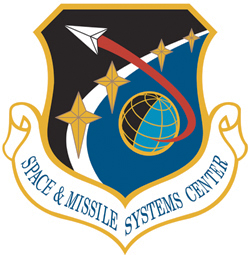

Ball Aerospace conducted a critical design review (CDR) of the Weather System Follow-on (WSF) satellite mission, which the company is building for the U.S. Space Force Space and Missile Systems Center (SMC). With CDR concluded, Ball Aerospace begins full production of the satellite.
Upon delivery, this next-generation operational environmental satellite system will provide critical and actionable environmental intelligence to military operations in all warfighting domains.
WSF is designed specifically to mitigate three high-priority Department of Defense Space-Based Environmental Monitoring (SBEM) gaps: ocean surface vector winds, tropical cyclone intensity and the space weather gap, low Earth orbit (LEO) energetic charged particles.

Artistic rendition of the Weather System Follow-on – Microwave satellite that is being built by Ball Aerospace for the U.S. Air Force. Image is courtesy of Ball Aerospace.
The satellite will also address three additional SBEM gaps: sea ice characterization, soil moisture and snow depth. As the prime contractor for WSF, Ball is responsible for delivering the entire mission, including instrument, spacecraft and system software, as well as the algorithms for data products, to SMC.
Ball has played key roles on numerous operational weather satellite programs, including the Ball-built Suomi National Polar-orbiting Partnership (Suomi NPP) satellite, which launched in 2011, and the Joint Polar Satellite System-1 (JPSS-1) satellite, now NOAA-20, which launched in 2017.

Mark Healy
Mark Healy, VP and GM, National Defense, Ball Aerospace, said that measuring and understanding the physical environment is critical to military operations, from determining tropical cyclone intensity for asset protection and maneuver operations to how wind and sea state play into assured access and aircraft carrier operations. Ball is proud to be a mission partner with the Space Force, working closely and collaboratively to ensure the success of this program, which extends Ball's legacy of providing precise measurements from space to enable more accurate atmospheric and ocean forecasting.

